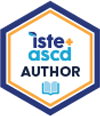

Event Information
Presentation Outline: "Critiquing with AI, Critiquing AI: Developing Critical Readers and Deepening Criticality"
Introduction (5 minutes)
-Brief overview of the session objectives: exploring the role of AI in literacy instruction, fostering critical reading, and deepening criticality.
-Introduction to key concepts: critical literacy, AI-assisted instruction, multimodal and multilingual approaches.
-Open with a thought-provoking question: "What role should AI play in literacy?"
-Use a live poll (using audience devices) to capture initial thoughts about AI in literacy instruction.
1. Multimodal and Multilingual Strategies for Critical Literacy (15 minutes)
-Overview of multimodal and multilingual strategies for AI-assisted literacy instruction.
-Examples of classroom practices using AI tools to critique texts across multiple languages and formats.
-Demonstration: Use an AI tool (e.g., ChatGPT, Claude, Google Gemini) to explore how AI handles multilingual content and analyze its effectiveness.
2. Designing Activities for Deepening Textual Critique with AI (15 minutes)
-Demonstration of AI tools that help students critique texts, misrepresentations, or omissions (e.g., ChatGPT and other AI-driven text analysis tools).
Showcase sample lesson plans that integrate AI to foster deeper textual critique in fiction and nonfiction.
3. Guiding Students in Critically Evaluating AI-Generated Responses (10 minutes)
-Discuss common biases and limitations of AI-generated texts.
-Techniques for teaching students to critically evaluate and challenge AI responses, fostering active engagement.
-Participants evaluate an AI response to a question and evaluate it with a provided framework.
4. Aligning AI-Assisted Instruction with Educational Standards (5 minutes)
-Overview of how AI-assisted literacy instruction can align with media literacy, critical thinking, and national or local educational standards.
-Demonstrate tools and strategies for aligning AI activities with curricular goals and assessment frameworks.
5. Q&A and Closing Remarks (10 minutes)
-Recap of session key points and takeaways.
-Open floor for participant questions and additional discussion.
Cope, B., & Kalantzis, M. (2015). A pedagogy of multiliteracies: Learning by design. Palgrave Macmillan.
Hutchison, A., & Woodward, L. (2014). A planning cycle for integrating digital technology into literacy instruction. The Reading Teacher, 67(6), 455-464.
García, O., & Li, W. (2014). Translanguaging: Language, bilingualism and education. Palgrave Macmillan.
Kress, G., & van Leeuwen, T. (2001). Multimodal discourse: The modes and media of contemporary communication. Arnold Publishers.
Mills, K. A. (2016). Literacy theories for the digital age: Social, critical, multimodal, spatial, material and sensory lenses. Multilingual Matters.
Pennycook, A. (2018). Posthumanist applied linguistics. Routledge.
Roll, I., & Wylie, R. (2016). Evolution and revolution in artificial intelligence in education. International Journal of Artificial Intelligence in Education, 26(2), 582-599.
Warschauer, M., & Liaw, M. L. (2011). Emerging technologies for autonomous language learning. Studies in Self-Access Learning Journal, 2(3), 107-118.



